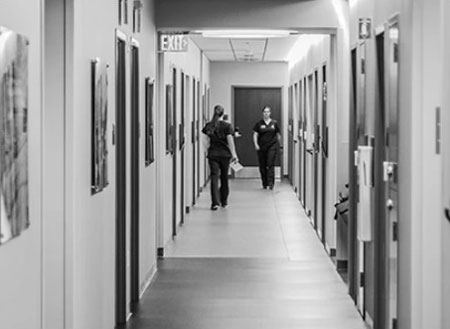Your shoulder isn’t the only place where a labrum exists. You also have a labrum in each of your hips! This structure helps hold the ball of the femur (thigh bone) in the acetabulum (socket) as well as provides cushioning to the joint. Though not the most common hip pathology, labral tears can certainly elicit pain. Alternatively, lots of patients may be found to have tears of the labrum that are asymptomatic, similar to rotator cuff tears or meniscus tears.
Labral tears most often occur after trauma to the area such as in sports but can also be caused by bony abnormalities that put undue stress on the labrum. Patients who are found to have labral tears of the hip often complain of joint stiffness, groin pain, and a clicking or popping sensation. At your clinic appointment with one of our hip specialists, the doctor or physician assistant will ask you to lay on the exam table so they can manipulate the joint in an effort to re-create your symptoms and determine the cause. X-rays will also be obtained to look for those previously mentioned bony abnormalities as well as to rule out other pathologies that can influence the treatment plan. If your physician believes a labral tear is present, he will likely order an MR arthrogram, or that special MRI with the injected contrast dye discussed in the blog about shoulder labral tears..
Upon confirming the presence of a labral tear, your physician will discuss the treatment options available for the severity of your tear. Lots of patients do well with a regimen of formal physical therapy, avoidance of aggravating activities, and relative rest with over-the-counter medications as needed. Physical therapy can help strengthen the surrounding musculature and correct postural deficits that put undue stress on the joint.
Some patients will be encouraged to consider surgical intervention in the form of an arthroscopy to repair the tear. During the procedure, your surgeon will also correct any underlying bony deformity that contributed to the tear. If the tissue is repaired, your surgeon will instruct you to be toe-touch weight bearing using crutches for the first six weeks following surgery to protect the repaired tissue. Physical therapy will eventually help to restore normal function.
If your nagging, pinching hip is preventing you from enjoying our beautiful Wisconsin winter, come see us at Orthopaedic Associates of Wisconsin!

